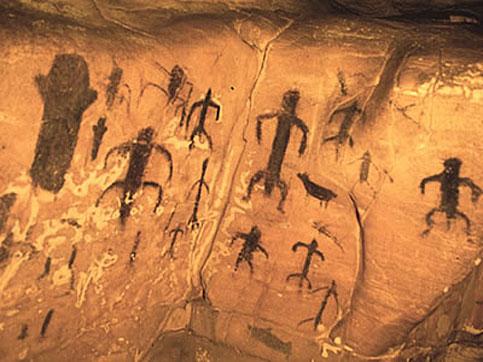words by Carol King
Cave paintings found on the small island of Favignana in the Aegadian Islands off the northwest coast of Sicily are believed to be 10,000 years old.
Said to be in a perfect state of preservation, the cave paintings date to the Eneolithic phase of the Bronze Age. They consist of five, monochrome stylised male anthropomorphic figures and some animals resembling fish, deer and hare. There are also some pictorial signs that are still being studied for their meaning.
Most likely, the paintings were created when the modern-day island of Favignana was connected to Sicily by a bridge of land in prehistoric times. They are located on two adjacent walls of the Grotto dell’Ucciria (Ucciria Cave).
Geoarchaeologist Francesco Torre told the ‘Corriere del Mezzogiorno’ that the paintings strike a new note in Italian prehistoric rock art for their naturalism and confident painting technique, which is reminiscent of the best expressions of rock art found in France and Spain.
The figures representing men have wiry bodies with their arms and legs spread apart. The size of their penises is accentuated and their heads are a continuation of their trunks. The head of one of the figures is shaped like a globe, as if wearing a headdress. Similar figures have been found in Spain and in France.
All the figures are painted in black, perhaps using manganese oxides or bat guano, mixed with sap from the tree spurge plant, which is found on the islands.








